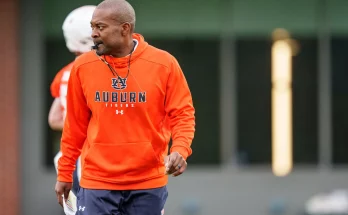Tyrese Maxey Declares His Top 5 Kentucky Wildcats Since 2008 – And Sparks Debate with a List Featuring Wall, Cousins, Davis, Himself and SGA
Tyrese Maxey, the electric NBA star and proud Kentucky Wildcat, recently made waves when he revealed his personal list of the top five University of Kentucky basketball players from the modern era—specifically, from 2008 to the present. In what quickly became a talking point across the basketball world, Maxey named John Wall, DeMarcus Cousins, Anthony Davis, Shai Gilgeous-Alexander, and himself as the top-tier representatives of the program’s rich talent pool over the last decade and a half. The selection stirred both celebration and controversy, as fans and analysts weighed in on who made the cut—and who didn’t.
Maxey’s list is a bold statement not only about individual greatness but about what it means to leave a legacy at one of college basketball’s most storied programs. In naming himself among some of the most dominant figures to pass through Lexington, Maxey raised eyebrows, inspired debates, and most importantly, reignited appreciation for Kentucky’s impressive NBA pipeline. The five players he picked all played under John Calipari’s coaching reign and are emblematic of the “one-and-done” culture that helped define the modern Kentucky brand. But as with any list, omissions are just as intriguing as inclusions.
Starting with John Wall, Maxey’s list opens with a name nearly every Kentucky fan would consider non-negotiable. Wall’s 2009-10 season at Kentucky is legendary. As a freshman, he averaged over 16 points and six assists per game, bringing flash, fire, and leadership to a team that instantly became a national title contender. Wall’s swagger, speed, and skill set changed how point guards were perceived at Kentucky, and his selection as the number one overall pick in the 2010 NBA Draft solidified his place in the school’s lore. For Maxey, Wall likely represents the blueprint—the original modern Wildcat who blazed the trail for others to follow. He was the face of the Calipari era’s explosive launch, and Maxey’s inclusion of Wall on his list is not just logical, it’s practically obligatory.
Next is DeMarcus Cousins, who played alongside Wall during that same 2009-10 campaign. Cousins brought brute strength, elite rebounding, and a commanding paint presence that made Kentucky nearly unstoppable inside. He averaged over 15 points and almost 10 rebounds per game, all while showcasing a motor that made him a matchup nightmare. His personality, both lovable and polarizing, made him a fan favorite, and like Wall, Cousins quickly transitioned into NBA stardom. His dominance during his early NBA years with the Sacramento Kings added further legitimacy to his college exploits. Maxey’s inclusion of Cousins underscores a reverence for players who not only thrived at Kentucky but also became dominant professionals—even if their NBA runs were shortened by injuries or off-court controversies.
Then comes Anthony Davis, whose inclusion is beyond reproach. Davis led Kentucky to a national championship in 2012, anchoring one of the greatest college basketball teams of the modern era. His stats don’t tell the full story—though they’re impressive: over 14 points, 10 rebounds, and nearly 4.7 blocks per game. What separates Davis is his generational defensive impact and ability to control games without needing to score. He swept national player of the year honors and was the first overall pick in the NBA Draft. In the NBA, Davis has won a championship, multiple All-Star selections, and established himself as one of the premier two-way players in the game. Davis’ presence on Maxey’s list is almost a given; his greatness is so universally acknowledged that leaving him off would have sparked even more controversy than including himself.
And yes, Maxey did include himself. This is where the debate begins to intensify. Tyrese Maxey played just one season at Kentucky, during the 2019-20 campaign. He averaged 14 points, four rebounds, and three assists per game—solid, though perhaps not otherworldly by Kentucky standards. However, his freshman debut, where he dropped 26 points against then-No. 1 ranked Michigan State, instantly announced his arrival and signaled that he belonged among elite company. The season was eventually cut short by the COVID-19 pandemic, which robbed Maxey of a potential NCAA tournament run. Still, his fearless shot-making, high motor, and charisma made him a fan favorite. Since joining the NBA, Maxey has exploded into stardom, earning an All-Star appearance, winning the NBA’s Most Improved Player award, and helping lead the Philadelphia 76ers through deep playoff battles. His self-inclusion might raise eyebrows, but in the context of his rapid NBA ascent and what he represents for Kentucky’s modern era, the choice makes more sense.
Rounding out the list is Shai Gilgeous-Alexander, perhaps the most surprising inclusion to casual fans but a favorite among basketball purists. SGA played just one season at Kentucky (2017-18), starting the year under the radar but finishing as the team’s undisputed leader. His averages—14.4 points, five assists, and nearly two steals per game—highlight his all-around skill set, but again, like Davis, his greatness has bloomed in the NBA. Over the past two seasons, Gilgeous-Alexander has emerged as one of the top five players in the league. He’s now a perennial MVP candidate, a scoring machine, and a defensive standout. His quiet demeanor belies a killer instinct, and his development arc is among the most impressive of any recent Kentucky product. Maxey’s respect for SGA is telling; it shows he values not just college success but long-term excellence.
What Maxey’s list ultimately reflects is a shift in how players define greatness at the college level. Traditionally, dominance was measured in titles, stats, or multi-year tenures. But Maxey’s list values impact, NBA translation, and long-term trajectory. Each of these players—Wall, Cousins, Davis, Maxey, and Gilgeous-Alexander—used Kentucky as a springboard to bigger stages, proving that even short college stays can produce lifelong legends. Maxey’s inclusion of himself is not just a boast—it’s a declaration of identity. He’s not trying to compare resumes with legends like Davis; he’s claiming his place among those who carried the Kentucky torch into the highest levels of professional basketball.
Still, this list leaves room for debate. What about Karl-Anthony Towns, who was the number one pick and an NBA All-Star? What about Devin Booker, who’s played in the NBA Finals and is widely considered one of the league’s best shooting guards? Or Jamal Murray, who has been a central figure in Denver’s championship core? Even Eric Bledsoe, Brandon Knight, Tyler Ulis, and Julius Randle could lay claim to a spot depending on the criteria. That’s the beauty and the burden of a program like Kentucky’s—there’s just too much talent to make any list uncontested.
What sets Maxey apart is that he’s offering a personal view. This isn’t a fan poll or a media ranking—it’s one competitor’s perspective on who belongs at the top. And in doing so, he’s taken ownership of his legacy in a program defined by legends. He’s embraced the pressure that comes with the Kentucky brand and declared that not only does he belong in that elite company, he’s earned his spot.
As Maxey’s career continues to ascend, this list may become even more validated. If he continues to stack All-Star appearances, lead his team deep into the playoffs, or perhaps even capture an NBA title, his name will no longer just be part of the conversation—it will be cemented in it. Until then, this list remains a snapshot of both pride and aspiration, a confident proclamation from one of Kentucky’s brightest stars.
In the end, Maxey’s top-five list doesn’t just celebrate great players—it celebrates the evolution of the Kentucky legacy. It’s about more than banners or stat lines. It’s about influence, inspiration, and the unshakable belief that you belong among the greats. For Tyrese Maxey, that belief is loud and clear—and he’s daring the rest of the basketball world to prove him wrong.



